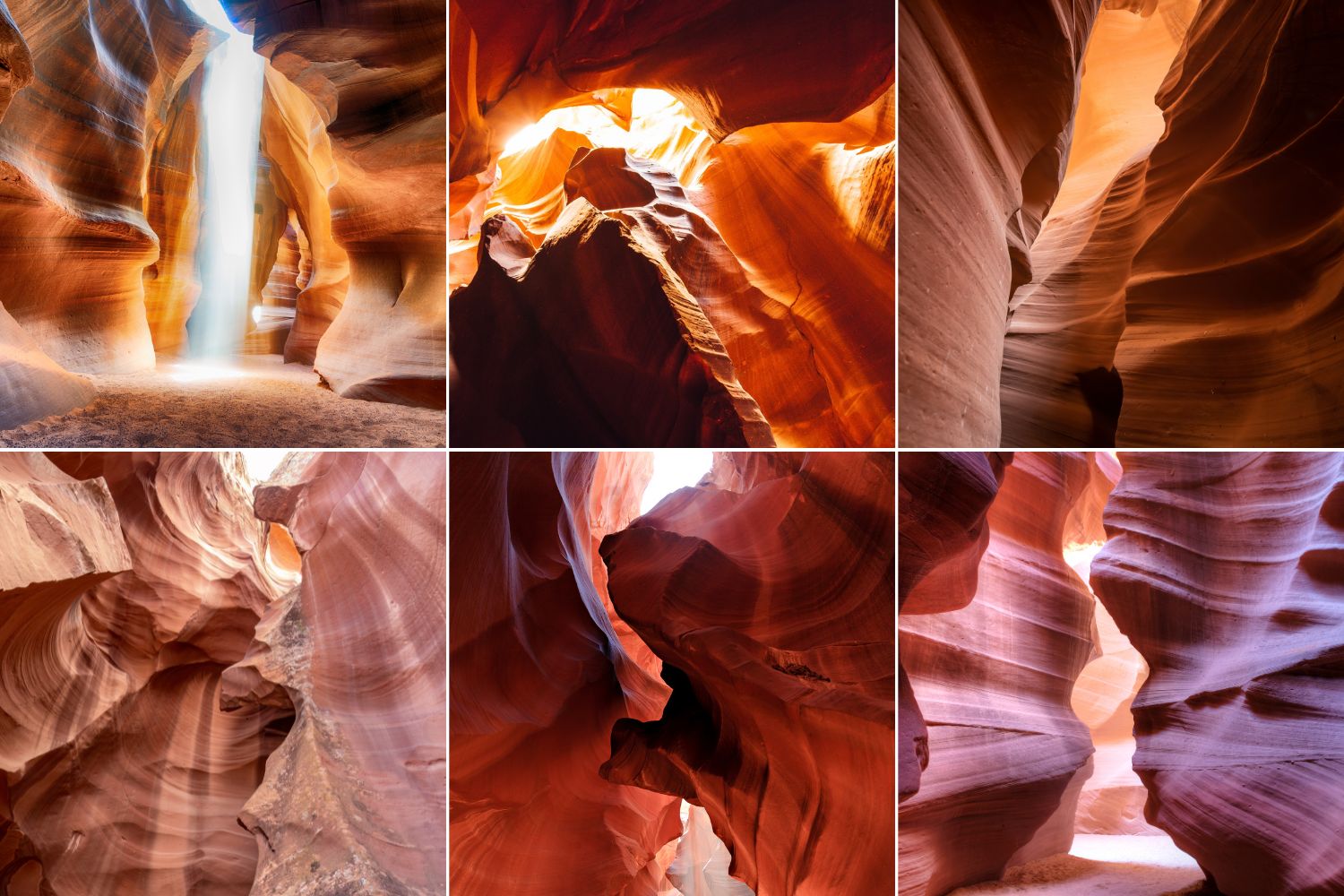Weather
In March, the weather in Page and around Antelope Canyon is getting warmer but can still be chilly. Mornings are usually around 40°F (4°C), and during the daytime, the temps can reach 60–65°F (16–18°C).
Check out the following temps showing a typical temperature progression on a March day:
- Morning | 8 AM: ~7°C (45°F)
- Midday | 12:30 PM: ~13°C (55°F)
- Afternoon | 4 PM: ~15°C (59°F)
- Early Evening | 6:30 PM: ~13°C (55°F)
Good to know: It’s always about 10°F (5–6°C) cooler inside the canyon than above it. Additionally, you might start the day feeling a little cold, but you should bring layers you can take off later as it warms up.
Rain: March is not a rainy month here, so you usually don’t have to worry about big storms. The risk of flash floods—when a lot of rain falls fast—is pretty low in March. However, it’s always good to keep an eye on the weather forecast before your trip. Canyon guides will cancel tours if there’s a danger of flooding, so you’ll be safe.
Keep in mind that there is no way to predict whether it will be in the 40s or 60s. Anything in between is possible.
Tours
All the tour operators here for both Upper and Lower Antelope Canyon usually run in March. This means you can choose from many different times and options. Tours are the only way to get inside the canyon since you must have a Navajo guide with you. Make sure to book your tour early because spots can fill up quickly, even in March.
Please make sure to check our tour booking site here. It’s essential to book a tour with a service that is safe and reliable! All those we offer via this website are 100% reliable with amazing customer service.
Upper vs. Lower Antelope Canyon
- Upper Antelope Canyon: The magical light beams are visible here. This part of the canyon can be visited easier as it’s flat and not too hard to get around inside.
- Lower Antelope Canyon: This canyon is slightly more difficult to hike because you have to go down a few stairs, using a ladder, and step over some rocks. Light beams can happen here, too, but not as many as in Upper Antelope.
The Start of Light Beams
The light beams in Antelope Canyon start to appear around March 20. This is when the real magic of begins to happen. However, they are not always on the exact same date each year because it depends on the sun’s position and the weather.
Tip: We suggest calling your operator/company 2-3 days before your tour in case you book a late March slot. Just ask them if the light beams are already visible.
The light beams are caused when the sun is high enough and can shine into the canyon. The closer to the end of March you visit, the better your chances of seeing them, especially if the sun is shining bright.
Good to know: Even if you visit in late March, it’s not the best time. The best period to see the shaft of light is during the summer (end of May until September), not March. You can see light beams in late March, but not in the completely defined shaft.
Our recommendation about the best time in March: Even if you visit before the light beams are visible, in early or mid-March, it’s still an awesome time to go!
Best Time of Day for Light Beams
If you want to see the light beams, try to be inside the canyon around midday—usually between 11 AM and 1:30 PM. During this time, the sun is high overhead. On a clear, sunny day, you can watch the light beams stream into the canyon’s narrow walls. If it’s cloudy, even at midday, you probably won’t see the beams. Read more about it here.
Crowds
March is definitely not as busy as in the summer months, but it can still get crowded, especially during school breaks. The best way to dodge busier times and crowds is to book a tour at a certain time of day. Early morning or late afternoon tours might have fewer visitors, but then you may miss the midday light beams. It’s a trade-off, but if you book early and pick your time carefully, you can enjoy a better experience.
